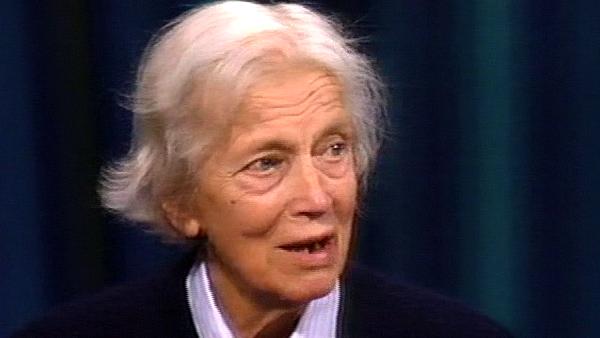NEXT STORY

Visiting America
RELATED STORIES

NEXT STORY

Visiting America
RELATED STORIES



|
Views | Duration | |
|---|---|---|---|
| 21. Working on cholesterol | 133 | 04:41 | |
| 22. Determining the chemical structure of penicillin | 160 | 06:39 | |
| 23. Work on penicillin | 101 | 03:34 | |
| 24. Crystallising penicillin | 85 | 04:25 | |
| 25. Photographing potassium, rubidium and sodium salts | 56 | 04:26 | |
| 26. Mapping the molecular structure of penicillin | 101 | 06:38 | |
| 27. Correlating the work on penicillin | 59 | 02:18 | |
| 28. Computing solutions for the structure of penicillin | 73 | 04:29 | |
| 29. My molecular model of penicillin | 94 | 03:27 | |
| 30. Visiting America | 109 | 02:12 |


Of course, there was awful difficulty and trouble about the writing up of penicillin, and partly because there was a good deal of disbelief about what was the structure of penicillin. But Robinson wrote... Robinson wrote the final paper on the structure, and Robinson does agree with the structure, although he never quite gave up the idea that it was really the oxazolone, and what one saw wasn't quite what he thought one should...
But after that, I was invited over to America - the war had ended - and the Rockerfeller Foundation paid for a fellowship for me to travel to different labs in America, because he thought it good for my education that I should know how far people had got in other places, and also, I could tell people how far I'd got. And it was, I sort of believed in my model more than anything else in the world, pretty well, so I packed it in my suitcase - it took up about half of it, as you can see what it looks like now at Oxford in the Ashmolean. And when I was passing through customs, the officer said, 'Have you got only personal belongings in this suitcase, clothes and so on, I suppose?' and then I said, 'Actually, there are sort of scientific models'. So then he made me show him, you see, so I explained to him what it was, and he thought for a long time over it and then said, 'Well, it may seem very funny to you, but if we just write this down as scientific model, worth less than one dollar, we should get through all right'. So that's what we did.
And the first thing that happened to me, when I got back to Hans Clarke's house, was we met du Vigneaud there, sitting on the sofa. Now du Vigneaud had, as you probably know, worked up this preparation of the oxazolone structure, and shown that the product of this was a penicillin compound with the right activity and all the rest of it. So the first thing he said when he saw me was, 'Are you quite sure you know the structure of penicillin?' And it was quite sort of funny being met by this degree of disbelief at this moment.
British pioneer of X-ray crystallography, Dorothy Hodgkin (1910-1994), is best known for her ground-breaking discovery of the structures of penicillin, insulin and vitamin B12. At age 18, she started studying chemistry at Somerville College, Oxford, then one of the University of Oxford colleges for women only. She also studied at the University of Cambridge under John Desmond Bernal, where she became aware of the potential of X-ray crystallography to determine the structure of proteins. Together with Sydney Brenner, Jack Dunitz, Leslie Orgel, and Beryl Oughton, she was one of the first people in April 1953 to see the model of the structure of DNA, constructed by Francis Crick and James Watson. She was awarded the 1964 Nobel Prize in Chemistry and is also known for her peace work with organisations such as Science for Peace and the Medical Aid Committee for Vietnam. All recorded material copyright of The Biochemical Society.
Title: My molecular model of penicillin
Listeners: Guy Dodson
Guy Dodson studied chemistry and physical science at the University of New Zealand, followed by a PhD on the crystallographic study of an alkaloid. In 1961, he came to Oxford to work on the crystal structure of insulin. In the mid 1970s Guy and his wife moved to York University to establish a laboratory. In addition to insulin studies the laboratory has investigated many complex molecules of medical significance, including haemoglobin, myoglobin, HIV related proteins, proteases and proteins involved in managing nucleic acids in cells. In 1993, he went to the NIMR in London to establish a crystallographic group in an environment that spanned molecular, physiological and disease-related disciplines. Here his research began on some cell signalling proteins. His interests on medically relevant proteins included prions, malarial and TB proteins, and some clinically relevant thrombin inhibitors. Guy Dodson retired in 2004 but is still finding much to do in York and the NIMR.
Tags: Rockerfeller Foundation, Vincent du Vigneaud
Duration: 3 minutes, 27 seconds
Date story recorded: 1990
Date story went live: 02 October 2009